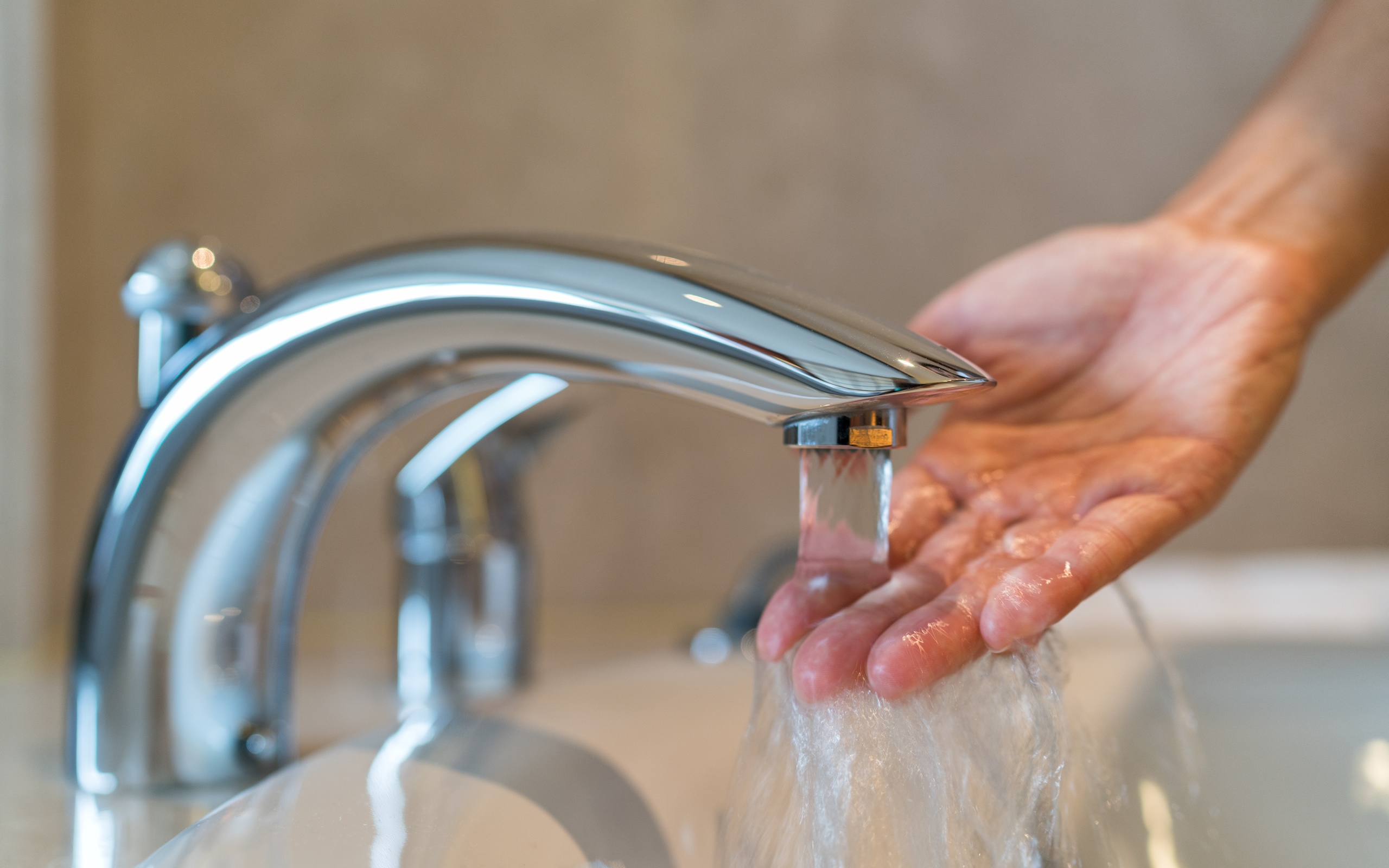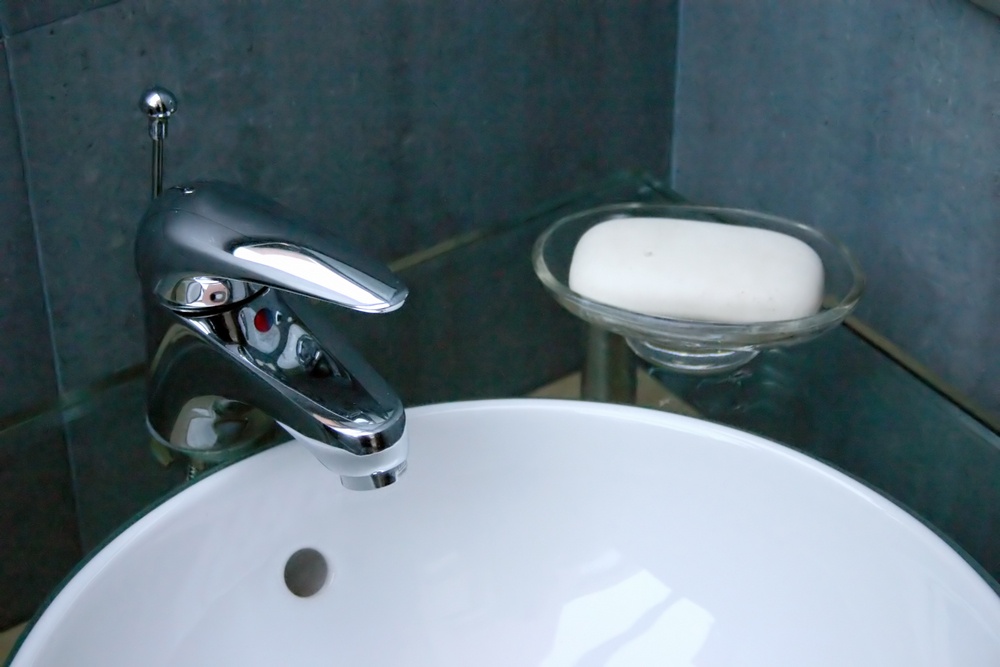
Before we address this all-important question, we need to remind ourselves of exactly what a TMV is and the role it plays in the fight against the proliferation of legionella bacteria. A thermostatic mixing valve (or TMV for short) is a dedicated means by which the end user can control water temperatures for their water outlets, be it in a domestic or commercial setting. Essentially it’s a device which automatically mixes hot and cold water so as to create a temperature-controlled flow for baths, showers and any other user-friendly water source found within a property. Predominantly a TMV is designed and manufactured to minimise the risks presented by scalding water, and is particular useful when said water outlets are frequented by the elderly or very young, by and large.
Traditionally fitted in very close proximity to, or indeed, at, these aforementioned water outlets, TMVs are located in such a way so as to blend the water at a physical juncture prior to expulsion from a tap, shower head or faucet; and at which point it comes into direct contact with individuals. As you’d expect, there is a raft of vital guidelines which determine just how these key valves should be both installed and routinely maintained thereafter, to ensure risks of contamination are drastically reduced from the outset. One of the most dangerous of these bacterial threats is that posed by the presence of Legionella in water systems; which statistics and experience tells us flourishes when water storage temperatures fluctuate between a range of 20 and 45ºC, yet is eliminated from the equation when the thermometer exceeds 60 ºC.
How Does a TMV Actually Work in Reality?
From a purely technical perspective, TMVs tend to operate in the following way;
- The optimum water temperature is determined and then pre-set by the installer
- Effectively hot and cold water enters the valve
- Said valve subsequently expands and contracts, courtesy of a thermal element which works away behind the scenes
- Opening and closing the side valves feeding the hot and cold water, this resultant action perpetuates the fusing together of the right volumes until such time as the desired (and pre-set) temperatures are acknowledged by the system
TMVs Offer Consistent Protection against Risk of Legionella and Scalding
That being said, another imminent danger to those susceptible arises once water temperatures (in relation to hand-washing, showering and bathing, etc) increase upwards of 50 ºC, with a very short window of time before a person is exposed to the potential for suffering serious scalding and/or burns to the skin once they come into contact with the extremely hot water. While these core temperatures eliminate the latent threat of legionella, any delivery of water via a tap or shower at these figures might result in serious health consequences. Which is precisely where and why TMVs come into play.
The installation of a thermostatic mixing valve augers well for the continual safeguarding against both legionella and scalding, for the simple reason the way in which it’s designed and enables water to be stored and distributed at a temperature high enough to nullify the dormant threat of deadly bacteria, however also allows for the blending of cold water in readiness for it reaching the tap and serving the consumer. In a nutshell, the utilisation of a TMV sees water on tap at an appropriate temperature whenever and wherever required, yet the means of systematic storage eradicates the possible spread of bacteriums. But that’s not necessarily the end of the story, and you must be constantly aware of associated risks; not least if the mixing of these waters occur downstream of the in-situ TMV which in itself may subsequently provide a suitable immediate environment for legionella to take root.
How Do You Stop Legionella in its Tracks, Were This Scenario to Come to Fruition?
The default solution to this risk lies in the regular servicing of the TMV, in a return to the gist of this specific blog topic. As most experts in the field of water treatment will concur, it’s prudent to service TMVs on an annual basis once installed, to ascertain that temperatures have remained constant and therein that regulation requirements are habitually met going forward. As we touched on above, perversely the introduction of a TMV might present a legionella risk, due to the manner in which it reduces the temperature of the hot water below the universally recommended maximum of 50°C, for safety reasons. Therefore to counter this prospect TMVs necessitate thorough and timely servicing (a minimum of once every 12 months if not more often, depending on the outcome of initial risk assessments and/or being compliant with manufacturer guidance) to afford end users the reassurance that the device is doing its job properly and moreover that the assemblage is working to maintain the correct temperature within the wider system. What’s more, the TMV should also all but guarantee that build-up of dirt and sediments (all of which could trigger and nurture legionella growth).
In terms of the where and when, TMVs should ideally be positioned as close to the outlets as the design of the existing system allows, and realistically be optimised to serve a couple, rather than an entire system. Bear in mind that when TMVs are too proximate to water heating assemblages, a dip in temperatures for a more significant stretch of the pipework connecting to the outlet can manifest; which as a knock-on effect could then become a breeding ground for bacteria ranging from deeply unpleasant to possibly even lethal (when considering legionella). When put into practice, such TMV servicing needs to cover disinfection, descaling and the rigorous cleaning of filters, strainers and other key components which form part of the device, while simultaneously recordings of water temperatures feeding into the valve, minimum and maximum blended water readings and observational notes on the condition of the inlet pipework should all take precedent. In addition to this, the timely capturing of water samples at strategic points around the system is also protocol keenly championed by experts in the field of water treatment.
Timeline-wise on the day of the TMV servicing and it’s likely that the first port of call will be to establish if the valves function as they should and are set between the pivotal 39-43°C temperature points; which is recommended for hot water outlets where a TMV is in operation. After this, the abovementioned cleaning, descaling and disinfecting will be rolled out, once this part of the system has been isolated.






